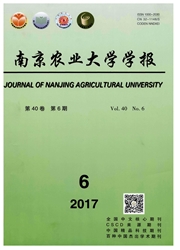

 中文摘要:
中文摘要:
基于经济效益和环境保护的考虑,近年来水稻的氮素利用效率引起了大家的重视。不同基因型水稻对氮素利用效率存在明显差异。氮素利用效率可分为吸收和生理利用效率两部分,它们对氮素利用效率的贡献率受到水稻生育期和供氮水平两方面的影响。从水稻根系特征、库容量、齐穗后的碳与氮的转运、光合作用和增硝营养等与水稻氮素利用效率关系密切的生理生化机制进行了阐述,最后对该领域今后的重点研究方向进行了展望。
 英文摘要:
英文摘要:
In view of economic benefit and environmental protection, more and more attention has been paid to nitrogen (N) use efficiency by plants in recent years. Much evidence has shown that there are significant differences of N use efficiencies among the different rice cultivars. Nitrogen use efficiency is composed of N uptake efficiency and N physiological use efficiency. The relative contribution of the two components to N use efficiency can be affected by the rice growth duration and N application rates, The paper summarizs physiological and biochemical mechanisms in terms of root system characteristics, sink potentials, translocation and remobilization of carbon and N, photosynthesis and enhanced nitrate nutrition, trying to relate these factors with N use efficiency. And further prospects of research directions in this field are introduced.
 同期刊论文项目
同期刊论文项目
 同项目期刊论文
同项目期刊论文
 Light-saturated photosynthetic rate in high nitrogen content rice leaves (Oryza sativa L.) is relate
Light-saturated photosynthetic rate in high nitrogen content rice leaves (Oryza sativa L.) is relate Ammonium nutrition increases water absorption in rice seedlings (Oryza sativa L.) under water stress
Ammonium nutrition increases water absorption in rice seedlings (Oryza sativa L.) under water stress 期刊信息
期刊信息
